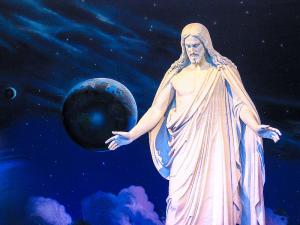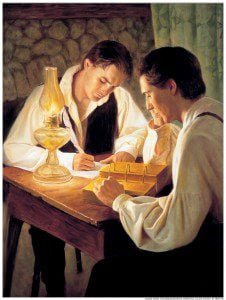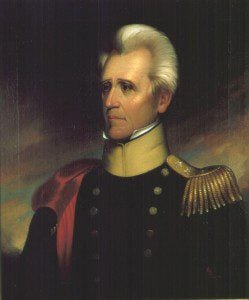The past decade has witnessed a remarkable surge of interest in the Book of Mormon—or at least of interest in making the text of the Book of Mormon available and accessible. Beginning, in many ways, with the 2003 publication of Grant Hardy’s Reader’s Edition of the Book of Mormon (published by the University of Illinois Press and based on the 1920 edition), what might almost be called a kind of movement has taken shape: Penguin published a handsome reprint of the 1840 edition of the book; Signature Books published a beautiful Reader’s Book of Mormon based on the 1830 edition; Yale University Press published Royal Skousen’s reconstruction of The Earliest Text of the book; etc. Importantly, the institutional Church has not watched idly from the sidelines as this development has taken shape. For the first time in its history, The Church of Jesus Christ of Latter-day Saints granted rights in 2004 to an independent publisher (Doubleday) to print the Church’s then-current (1981 edition) official base text of the book. (The most recent, 2013 edition can be read online here.)
Among attempts to make the Book of Mormon more readily available and accessible, there have also been several publications of selections of the book. In 2005, Jana Riess published her Selections Annotated and Explained with Skylight. In 2010, Laurie Maffly-Kipp published her collection of American Scriptures with Penguin, which set selections from the Book of Mormon alongside other American sacred texts from the early Republic. These publications are in many ways the most interesting. In the choices they make—what to include, what to exclude—they employ unstated criteria about what’s most important in the book. Should doctrinal sermons or well-known narratives be privileged? Is Nephi’s covenantal focus or Alma’s soteriological focus of more worth to potential readers? How important is the visit of Jesus Christ in Third Nephi, or how important are his teachings on the occasion of that visit, when compared to other parts of the book?
To this series of publications—whether of the whole Book of Mormon or only (if more provocatively) of selections—the American Humanist Association has added its own edition. (For helpful information on the Association, see the well-written Wikipedia entry.) Earlier this year, the organization published A Jefferson Bible for the Twenty-First Century, a republication of Thomas Jefferson’s personal secularized version of the Gospels, supplemented by excerpts from other world scripture—the Book of Mormon included. Here again the Book of Mormon is presented only in bits and pieces but now with rather explicit criteria of selection.
I’m no humanist myself, secular or otherwise, but the humanist Book of Mormon is a fascinating—if brief—read.
First, it has to be said that A Jefferson Bible for the Twenty-First Century is a bit artlessly executed. Jefferson’s remarkably careful cut-and-paste job shines a little too brightly next to the Association’s rather pedestrian lists of “best” and “worst” passages from the Gospels, the Hebrew Bible, the Qur’an, the Bhagavadgita, various Buddhist Sutras, and the Book of Mormon. Indeed, that “the worst of” each scriptural tradition is included at all along with “the best of” them makes the Association’s treatment appear a good deal more ideological than Jefferson’s treatment of the Gospels. In the place of careful study and creative reconstruction, the reader gets a simplistic and not-exactly-consistent filtering that results in unweighted lists of uncontextualized passages.
Such worries aside, though, how does the humanist Book of Mormon look?
To begin (and, so as not to let this post get overly long, to end) at the beginning: First Nephi. This first of the fifteen books making up the Book of Mormon is perhaps the most accessible to first-time readers. It’s as action-packed as the Book of Mormon generally gets (adventures on land and sea, in city and wilderness), it hosts the most universally intelligible spiritual manifestation in the book (the famous dream of the tree of life), it contains the richest outline of the book’s vision of America’s destiny (the site of a religious revolution that restores to Christianity its Jewish covenantal roots), and it introduces the book’s complex relationship to the Bible (a host of historical references is to be found alongside inventive readings of the Hebrew Bible’s prophetic texts). First Nephi is a remarkably carefully structured text, self-conscious in an almost postmodern way, and its message is consistent and novel.
Now the humanist First Nephi. Three passages from First Nephi make the “best of” list: 1 Nephi 13:37, 1 Nephi 16:38, and 1 Nephi 22:23. The first of these comes in the middle of a pages-long vision of America’s destiny, and specifically at the climax of the narrative presented in that vision. Nephi, witness of the vision, has just seen the coming forth of the Book of Mormon in the early American Republic, and his angelic guide explains to him—in language partly borrowed from Isaiah—what it will mean to be involved in the movement that would surround the Book of Mormon: “And blessed are they who shall seek to bring forth my Zion at that day, for they shall have the gift and the power of the Holy Ghost; and if they endure unto the end they shall be lifted up at the last day, and shall be saved in the everlasting kingdom of the Lamb; and whoso shall publish peace, yea, tidings of great joy, how beautiful upon the mountains shall they be!” What in this interests the humanist? Only the last part of the passage is quoted: “whoso shall publish peace, yea, tidings of great joy, how beautiful upon the mountains shall they be.”
The second passage comes from a rather tense scene. The family whose story is told in First Nephi is in the middle of a years-long trek across the ancient Arabian peninsula. When, Ishmael, one of the company’s two patriarchal leaders, dies, a rebellion breaks out against those who have led the group—at God’s behest—into the desert. The ringleaders of the rebellion, Nephi’s oldest brothers, launch into a diatribe, clearly in order to justify their just-announced plan to kill the spiritual leaders of the group: their father, Lehi, and their brother Nephi. Fascinatingly, their justification is at once skeptical and superstitious—dismissive of angels and the voice of the Lord but nonetheless trusting that those they criticize are somehow able to use the “cunning arts” to real effect. Here’s the passage: “Now, he [Nephi] says that the Lord has talked with him, and also that angels have ministered unto him. But behold, we know that he lies unto us; and he tells us these things, and he worketh many things by his cunning arts, that he may deceive our eyes, thinking, perhaps, that he may lead us away into some strange wilderness; and after he has led us away, he has thought to make himself a king and a ruler over us, that he may do with us according to his will and pleasure.” What here interests the humanist? The whole passage, presumably to be understood as the level-headed insight of the rebels.
The third passage comes from the last chapter of First Nephi, the closing words of a sermon delivered by Nephi to his at-that-point pacified older brothers. His focus in the sermon is the meaning of Isaiah’s writings (specifically Isaiah 48-49, quoted in full prior to the sermon). Looking to the era of the Book of Mormon’s latter-day emergence, an era he had seen in vision, Nephi describes the desires of the “churches” that would be built up in that day: “For the time speedily shall come that all churches which are built up to get gain, and all those who are built up to get power over the flesh, and those who are built up to become popular in the eyes of the world, and those who seek the lusts of the flesh and the things of the world, and to do all manner of iniquity; yea, in fine, all those who belong to the kingdom of the devil are they who need fear, and tremble, and quake; they are those who must be brought low in the dust; they are those who must be consumed as stubble.” What interests the humanist in this last passage? The claim, it seems, that religion as often as not is a ruse, a mask for all too human pursuits.
Of everything that can be found in First Nephi, these are the three passages that make the cut: (1) a borrowing from Isaiah, heavily decontextualized so that its celebration of “peace” is presented in purely secular terms; (2) a skeptical-and-yet-superstitious justification for murderous mutiny, similarly decontextualized so that it presents only its accusation of the religious establishment; and (3) a prophet’s prediction of how ecclesiastical corruption will eventually implode so that the true work of God can go forward, decontextualized as well so that it presents only a devastating criticism of ecclesiastic institutions. The Association’s treatment would seem to suggest that the Book of Mormon can only be salvaged if its words are decontextualized, its various voices indifferentiated, and its counter-cultural message entirely ignored.
Likely, as I’ve suggested, this approach is primarily the result of artlessness. Nonetheless, it helps to highlight a real difference between the task Jefferson set for himself and the task the Association set for itself when it decided to tackle the Book of Mormon. Jefferson could reconstruct a humanist Jesus from the New Testament in part because there arguably was a humanist (albeit not secular humanist) Jesus in the New Testament. It was a matter for Jefferson of stripping away, Bultmann-like, what many scholars regard as otherworldly textual accretions that present Jesus otherwise than he really was. The task would have to be very different with the Book of Mormon. A book that opens with a young man being constrained by God’s Spirit to kill a man in a Jerusalem alley, that insists on human beings’ utter nothingness, that tells the story of a secular humanist educator who is struck dumb by the power of God—this sort of book, more non- or even anti-humanist than humanist, isn’t as amenable as the earliest of the Gospels to the kind of cut-and-paste work Jefferson undertook.
It isn’t, however, entirely clear whether Latter-day Saints themselves—those who believe the Book of Mormon to be God’s word—fully recognize the force of their own book. This becomes clear, I think, when one turns to the Association’s “worst of” list for First Nephi. Four passages find themselves on this list: 1 Nephi 4:18, 1 Nephi 12:23, 1 Nephi 14:9-10, and 1 Nephi 19:14. The first and third of these are no surprise at this point: 1 Nephi 4:18 describes the just-mentioned killing undertaken in obedience to the constraint of God’s Spirit, and 1 Nephi 14:9-10 claims that there are only two churches—the church of the Lamb (the true church) and the church of the devil (all others)—which is hardly a vision shared by humanists. The other two passages that make the “worst of” list, however, deserve some attention for the way they’re suggestive of the complex relationship believing Latter-day Saints’ have with their scriptures. I’ll just take up the more illustrative of the two. (Much of what I say below about 1 Nephi 12:23 could be said about 1 Nephi 19:14, but replacing worries about attitudes toward native American peoples with worries about attitudes toward Jews.)
1 Nephi 12:23 reads as follows, describing in anticipation the state of the native American peoples left behind at the end of the Book of Mormon’s narrative: “And it came to pass that I beheld, after they had dwindled in unbelief they became a dark, and loathsome, and a filthy people, full of idleness and all manner of abominations.” Because the passages listed in A Jefferson Bible for the Twenty-First Century aren’t annotated, it isn’t clear whether the Association flagged this passage for what many would take to be its implicit racism or for what might more simply be seen as its suggestion that unbelief leads to wickedness and idleness. There’s good reason, actually, to suspect that it’s the latter, but I’m not sure this matters: the Association was nonetheless quick to identify in their “worst of the Book of Mormon” lists more generally all those passages in the book that more overtly suggest a problematic attitude toward native American peoples: 2 Nephi 5:21-23; Alma 3:6, 8-9; 3 Nephi 2:14-15; Mormon 5:15. (Those passages that—beautifully!—work against such attitudes, most famously 2 Nephi 26:33 and Jacob 3:9, unfortunately don’t make the “best of” list.) Now, it must be noted that these are passages with which Latter-day Saints, much more than humanist readers, struggle with. There’s an important history of adjustments to the scriptural text, adjustments clearly meant to discourage certain interpretations or appropriations of such passages. Similarly, there’s a long and interesting history of apologetic explanations of these passages, explanations that aim at producing interpretations that are less overtly offensive to modern sensibilities. Whatever the ultimate meaning of such passages might be determined to be, these histories of struggle on the part of believers are instructive. Latter-day Saints as much as secular humanists have an interest in getting around passages that offend certain humanist concerns.
The Book of Mormon, it seems safe to say, isn’t a naturally humanist book. It doesn’t lend itself to Jeffersonian revisionism as easily as the New Testament might. (That’s something to celebrate, in my view.) The book is, on the best account, presented as an ancient prophetic anticipation and critique of modern secularism—indeed, of exactly the secularism represented in Jefferson’s reworking of the Gospels, the secularism of precisely that time and place. At the same time, the Book of Mormon’s faithful readers, those who credit it as scripture and even as ancient history (and to be clear: I’m among them), can’t help, it seems, but have humanistic worries about occasional passages in the text. Does that mean that even those who hold to the book haven’t entirely received its non- or even anti-humanistic message? Or must even the Book of Mormon’s emphatic contestation of humanism be refracted through a (qualifiedly) humanist lens?
These are questions Latter-day Saints tacitly wrestle with. And to wrestle with them may be the best form of faithfulness to the Book of Mormon yet experienced.











